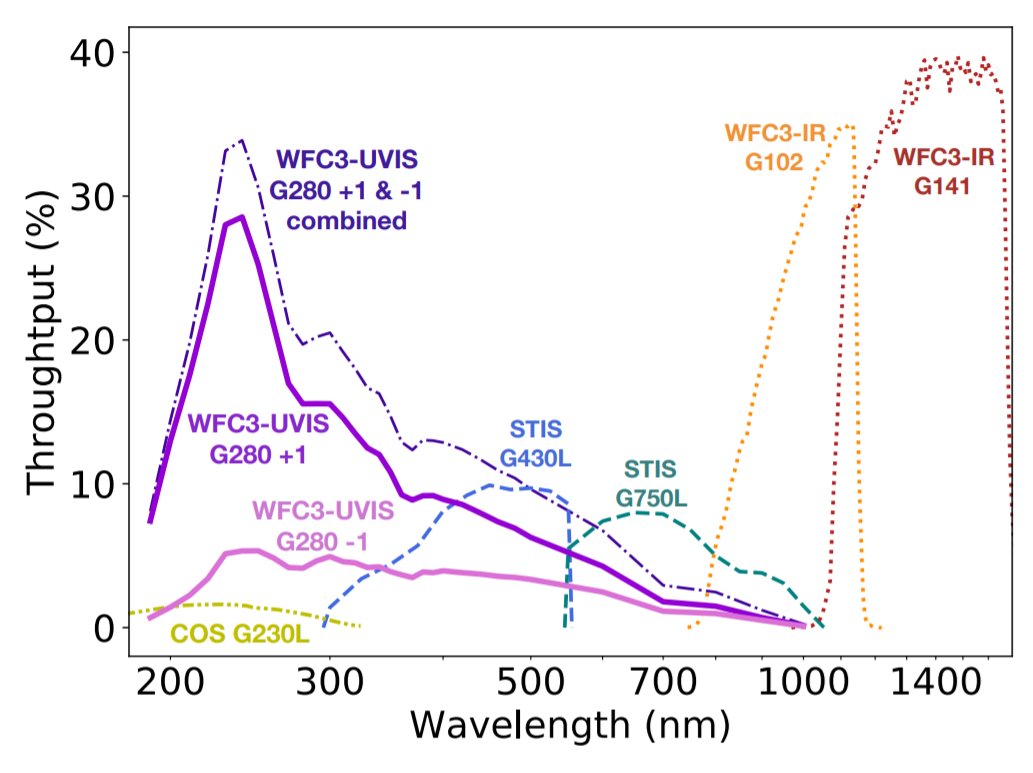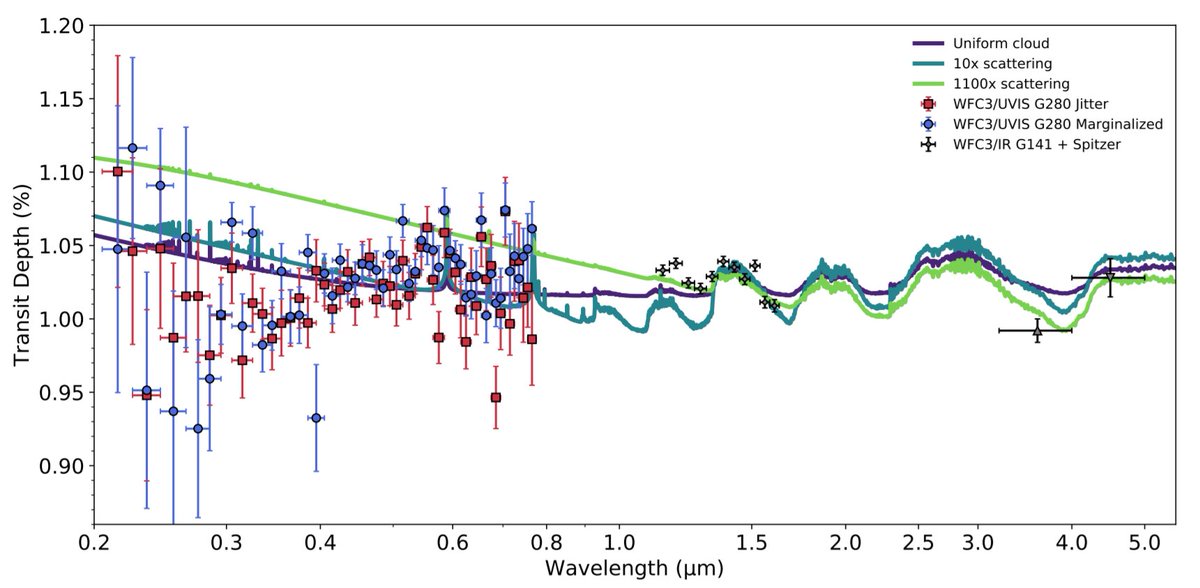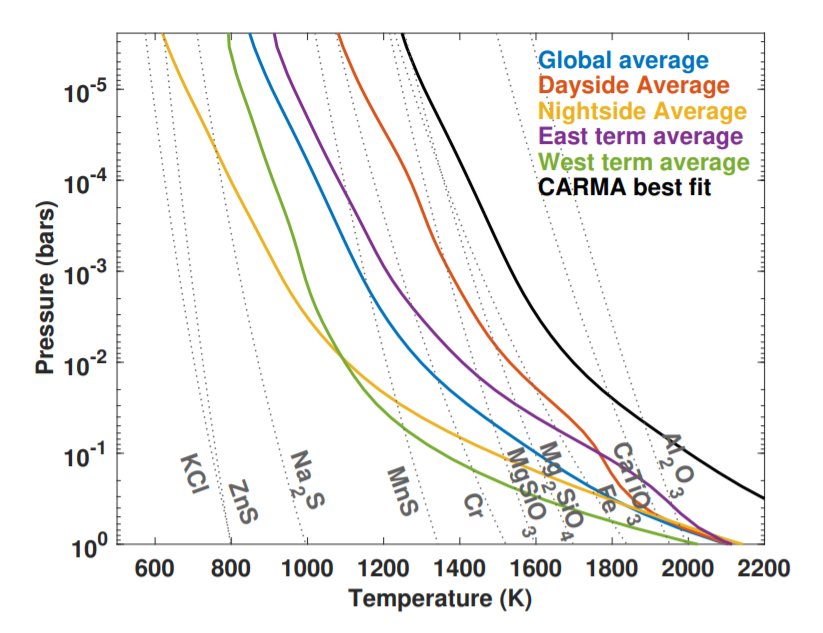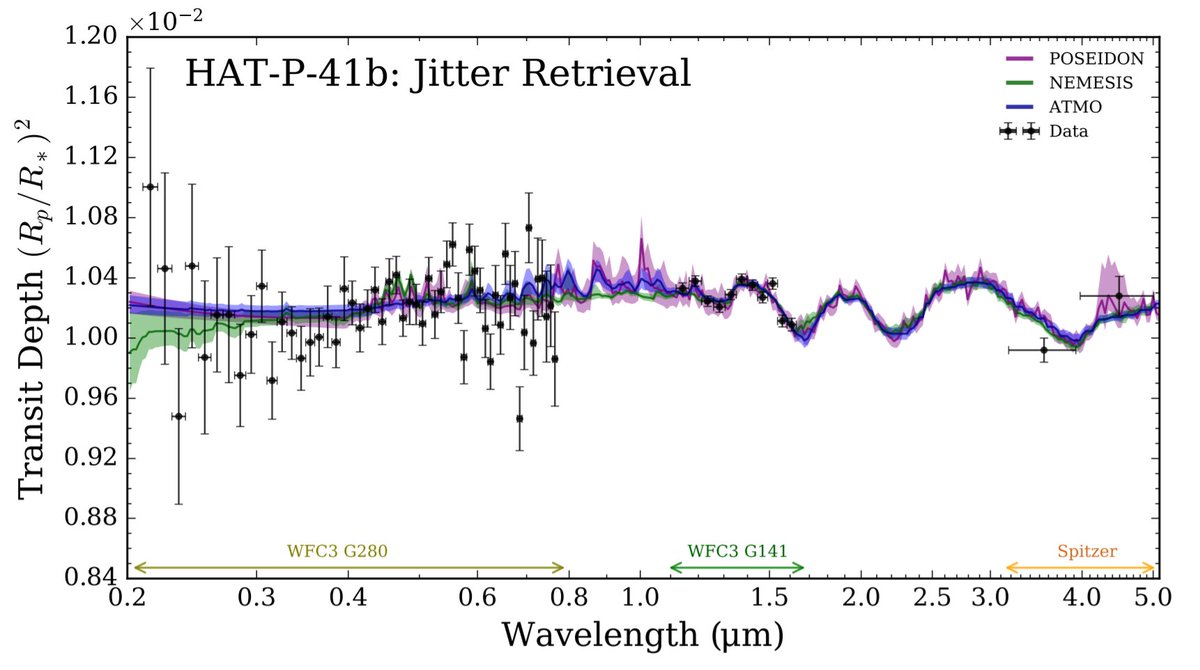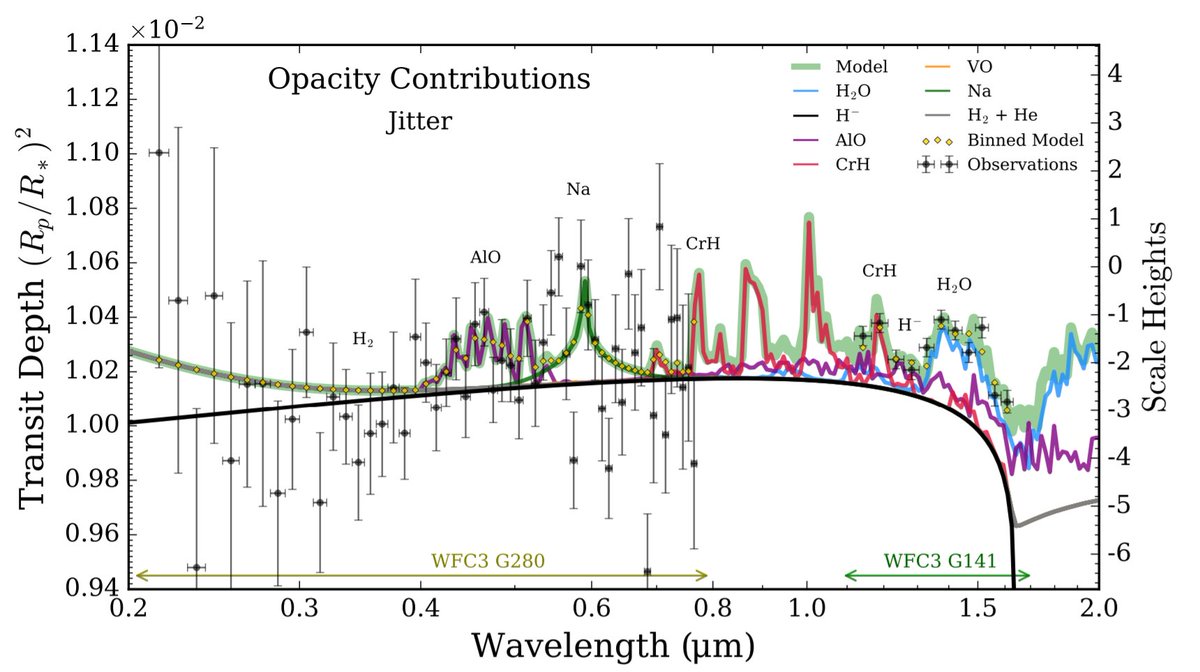New co-authored paper out today!
Over 1,000 light years away, the hot Jupiter HAT-P-41b has been extensively observed by @NASAHubble for many years.
We& #39;re excited to share what we& #39;ve learned about HAT-P-41b& #39;s atmosphere.
THREAD
#astronomy #exoplanets #hotjupiter
Over 1,000 light years away, the hot Jupiter HAT-P-41b has been extensively observed by @NASAHubble for many years.
We& #39;re excited to share what we& #39;ve learned about HAT-P-41b& #39;s atmosphere.
THREAD
#astronomy #exoplanets #hotjupiter
To reveal what exoplanet atmospheres are made of, it& #39;s vital to observe over a wide wavelength range.
Molecules, atoms, clouds, and hazes all imprint signatures in exoplanet spectra.
HAT-P-41b is one of very few planets with spectra covering the near-UV, visible, and infrared.
Molecules, atoms, clouds, and hazes all imprint signatures in exoplanet spectra.
HAT-P-41b is one of very few planets with spectra covering the near-UV, visible, and infrared.
We normally observe exoplanet atmospheres in the infrared or visible light, but there& #39;s a new instrument in town.
@StellarPlanet showed that the @NASAHubble G280 grism can obtain fantastic transmission spectra from visible light into the near-UV:
https://arxiv.org/abs/2003.00536 ">https://arxiv.org/abs/2003....
@StellarPlanet showed that the @NASAHubble G280 grism can obtain fantastic transmission spectra from visible light into the near-UV:
https://arxiv.org/abs/2003.00536 ">https://arxiv.org/abs/2003....
But when you compare the transmission spectrum of HAT-P-41b to models, it& #39;s hard to find one that can fit both the UV and infrared observations.
Our new paper led by @NikoleKLewis (published in ApJL) offers an explanation for HAT-P-41b& #39;s near-UV to infrared transmission spectrum:
https://arxiv.org/abs/2010.08551 ">https://arxiv.org/abs/2010....
https://arxiv.org/abs/2010.08551 ">https://arxiv.org/abs/2010....
We first tried self-consistent atmospheric models. Both chemical equilibrium and sophisticated cloud models could fit some of the observations, but not all the spectral regions simultaneously.
So we assembled three different retrieval codes (NEMESIS, ATMO and POSEIDON by @DrJoVian @astro_jgoyal, and myself) to see if they could identify what is going on.
All three codes independently found a solution that works!
All three codes independently found a solution that works!
We confidently detect H2O absorption in the infrared, and find that the hydrogen anion H- is the best candidate to explain the near-UV and visible data.
(other molecules like AlO and VO could also be there, but they are sensitive to the chosen data reduction technique).
(other molecules like AlO and VO could also be there, but they are sensitive to the chosen data reduction technique).
Evidence of H- has emerged in ultra-hot Jupiters over the last few years (e.g. Work by @V_Parmentier), but HAT-P-41b is a little cooler than where we& #39;d usually expect it.
So we propose dissociative electron attachment of H2 as a disequilibrium mechanism to make the inferred H-.
So we propose dissociative electron attachment of H2 as a disequilibrium mechanism to make the inferred H-.
We also measured the metallicity of HAT-P-41b& #39;s atmosphere (using the H2O abundance to back out O/H).
Our retrievals are consistent with a stellar metallicity (most to 1 sigma, all to 2 sigma).
Our retrievals are consistent with a stellar metallicity (most to 1 sigma, all to 2 sigma).
Our study shows the importance of applying a wide range of models to understand high-quality exoplanet spectra.
In many ways this provides a preview of what awaits us with @NASAWebb in the coming years.
In many ways this provides a preview of what awaits us with @NASAWebb in the coming years.

 Read on Twitter
Read on Twitter